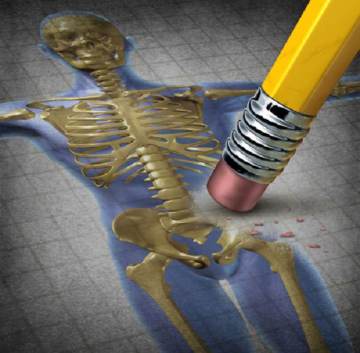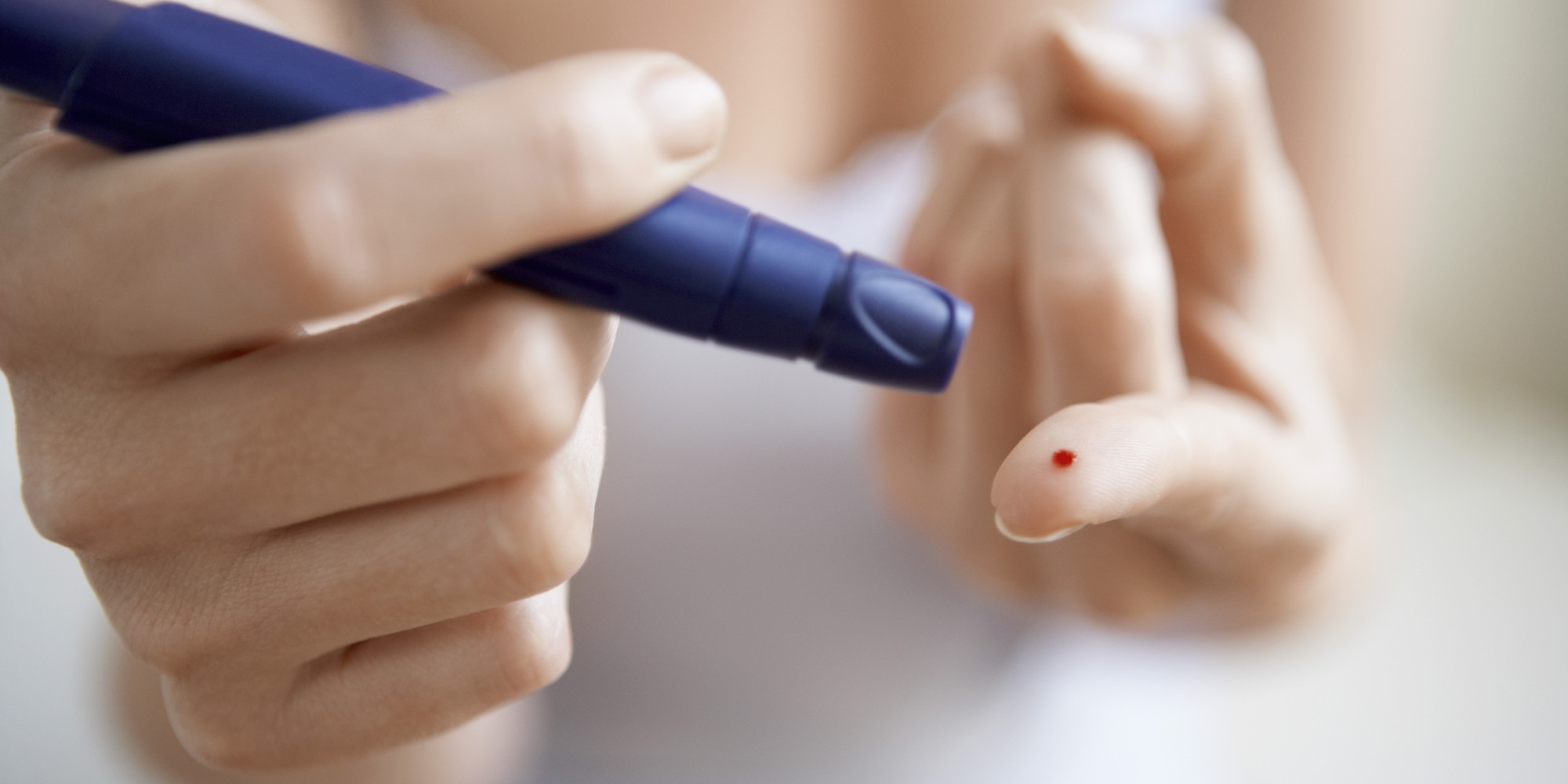If you do not get enough calcium and vitamin D in your body or your body does not absorb enough calcium, your bones may become brittle and the resultant condition is known as osteoporosis. As defined by the World Health Organization, osteoporosis is a generalized skeletal disorder of low bone mass (thinning of the bone) and deterioration in its architecture, causing susceptibility to fracture.
Equation of osteoporosis
Bone Formation > Bone Resorption = Normal Growth
Bone Resorption > Bone Formation = Osteoporosis condition
Who is at risk of osteoporosis?
All men and women have some risk of developing osteoporosis, but women are more at risk than men because women lose bone material more rapidly, especially after menopause when their levels of estrogen hormone fall. This risk increases as the age increases; about half of all women over the age of 50 report fractures of the hip, wrist, or vertebra, very common in osteoporosis.
Symptoms
Osteoporosis symptoms could not be observed in the early stages, but is realised very late because osteoporosis generally develops slowly over the years. Osteoporosis is a precursor of one or more situations like this:
 Fragility fracture: A bone fracture that occurs much more easily than expected, set off by even a simple fall on the ground. A bone fracture after a minor injury like this is known as a fragility fracture. Fragility fractures are most commonly of the hip, wrist, and vertebrae (the spine segments).
Fragility fracture: A bone fracture that occurs much more easily than expected, set off by even a simple fall on the ground. A bone fracture after a minor injury like this is known as a fragility fracture. Fragility fractures are most commonly of the hip, wrist, and vertebrae (the spine segments).- Vertebral Compression Fracture: When a bone in the spine collapses particularly in the lower vertebrae of spine, it is called compression fractures. Pain in the spine is felt after fracture and the most worrying thing is that this fracture occurs even without any injury.
- Kyphosis (dowager’s hump): A situation where there can be a loss of height (as much as 6 inches) over time and a stooped posture may develop consequently.
What are the reasons causing osteoporosis?
The major reason of osteoporosis is the insufficient amount of calcium and vitamin D in the body, leading to degenerated bone cells which are responsible for bone loss and also increase the risk of developing osteoporosis. For example, if you have:
- Premature menopause before the age of 45, or when the periods have stopped for six months or more before the time of the menopause (amenorrhea)
- Have a strong family history of osteoporosis. (That is, a mother, father, sister or brother affected.)
- Low body weight
- The use of a steroid medicine (such as prednisolone) for three months or more.
- Increased alcohol or caffeine intake
Prevention of osteoporosis
 We have seen various reasons responsible for osteoporosis; therefore it can be prevented by taking care of the above factors. Taking a calcium and vitamin D rich diet is extremely important to cure this deficiency. One can derive Vitamin D from salmon, mackerel, tuna fish and sardines. The ultraviolet rays in sunshine also trigger the formation of vitamin D. The recommended daily dosage varies with age, as tabular representation is given to indicate how much daily intake of Calcium and Vitamin D is appropriate to bring general health.
We have seen various reasons responsible for osteoporosis; therefore it can be prevented by taking care of the above factors. Taking a calcium and vitamin D rich diet is extremely important to cure this deficiency. One can derive Vitamin D from salmon, mackerel, tuna fish and sardines. The ultraviolet rays in sunshine also trigger the formation of vitamin D. The recommended daily dosage varies with age, as tabular representation is given to indicate how much daily intake of Calcium and Vitamin D is appropriate to bring general health.
Adults ≤ 50 = 1000 mg of calcium + 400 – 800 IU of vitamin D
Women , 51-70 =1200 mg of calcium + 400 – 800 IU of vitamin D
Men, 51 to 70 = 1000 mg of calcium + 400 – 800 IU of vitamin D
Adults >70 = 1200 mg of calcium + 800 IU of vitamin D
Exercise. Regular exercise stimulates bone formation and bolsters the bone density. For young people, it is best to try heavy weight training, vigorous exercises and muscles strengthening exercises. For older people, regular walks are a good option. Any exercise presenting a risk of fall should be avoided. Muscle strengthening exercises should also be introduced in routine workouts.
Prevention of Steroid induced Osteoporosis
Calcium and vitamin D deficiency is the main reason for defragile bones but sometimes osteoporosis is caused by taking steroids also and is known as Steroid induced Osteoporosis. Intake of the steroid tablets taken for three or more months introduces the risk of steroid-induced osteoporosis. The steroids lower the bone density and make bones fragile. Between 3 and 5 in 10, people who take steroids in the long term develop a fragility fracture because of osteoporosis.
Tips and techniques for Pain management
The pain caused due to osteoporosis makes you very difficult to move or stay active, however inactivity may aggravate the situation therefore it is necessary to move the body. In case pain persists, there are a variety of ways to manage the osteoporosis pain-
1. Therapies:
- Heat and ice therapy: Both heat and cold can be effective at relieving pain. Warm showers or hot packs can ease stiff muscles. Ice can numb the painful area and reduce the swelling and inflammation. But they should not be used for prolonged time, rather 20 minutes maximum so as to no harm could be caused to skin.
- Acupuncture, Acupressure and Massage Therapy: These treatments relieve the pain and tension associated with osteoporosis and helps you regain the energy to get back on your feet again.
2. Biofeedback:
Biofeedback is taught by a professional. In this case, he uses special machines and teaches patient how to control bodily functions, such as heart rate and muscle tension. Once the technique is mastered, it can be practiced without the use of the machine.
3. Braces and support:
Choose the right size devices to walk like walker or cane, because you have to put your weight on it. A brace will allow you to move around normally while the fracture is healing. But don’t depend on the brace too long, or else your muscles will start weakening.
4. Drugs for relieving pain:
For mild or episodic pain, you can take over-the-counter pain relievers such as ibuprofen, acetaminophen, aspirin or naproxen at home only. But they should be taken with care and not in frequency, because at times these may cause stomach irritation and bleeding or liver problems. Other drugs that could also be taken but with doctor prescription are:
- Narcotics: They can help in the short-term relief of acute pain, but should not be used for their side effects.
- Antidepressant medication: These medications may be prescribed when other forms of pain relief have not helped.
Conclusion
Don’t wait until you’ve experienced a fracture, says Dr. Shipp, spokesperson for the American Physical Therapy Association and the National Osteoporosis Foundation. Osteoporosis leads to the thinning of the bones and makes a person more susceptible to fractures and the onset of other diseases, therefore it is better to be aware sooner.
Also Read: Arthritis- Types, Symptoms and Treatment
If you found this blog helpful, do share it with your friends. You can also post comments in case you have any health queries.
Get useful health tips and remedies regularly, on your Facebook feed.



